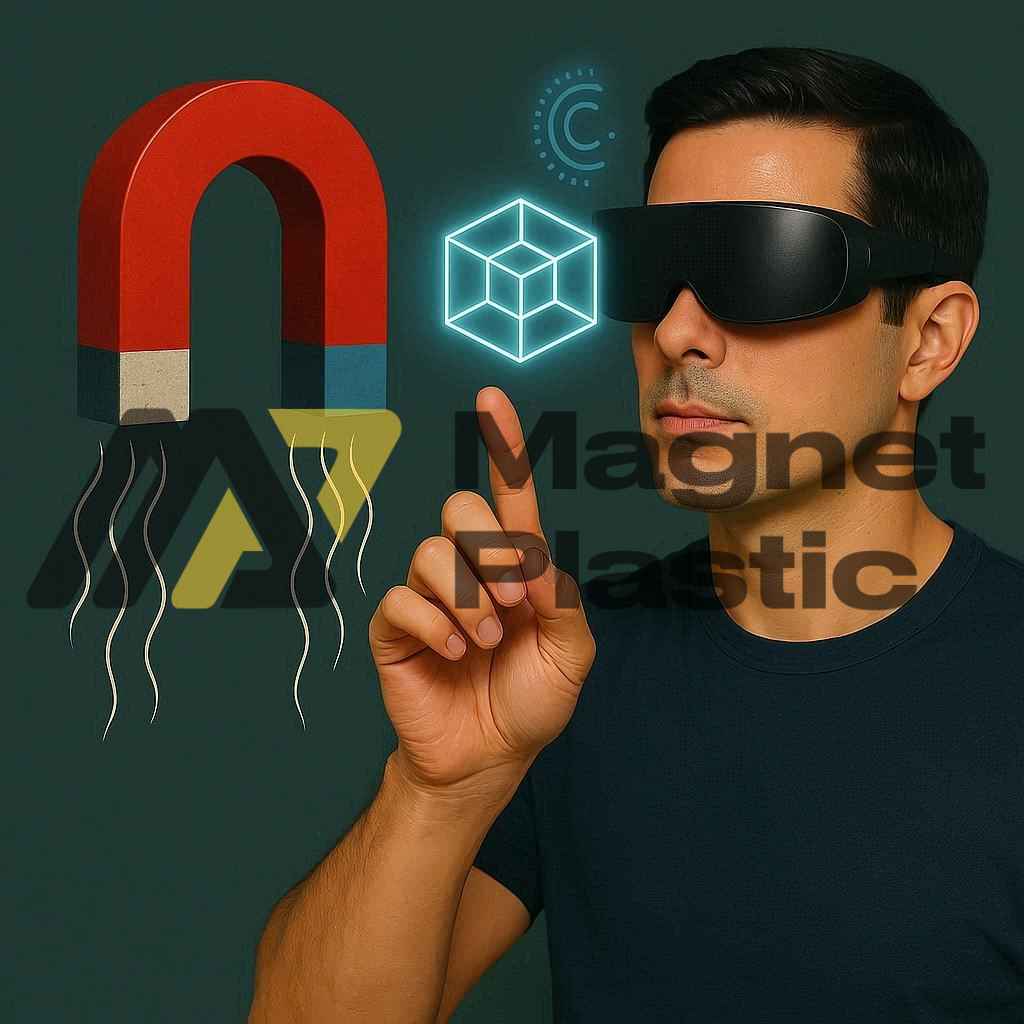Magnetism and Augmented Reality: The Union Between the Physical and Digital Worlds
Augmented Reality (AR) and Virtual Reality (VR) are transforming the way we interact with the world. These technologies do not rely solely on graphics or software, but also on physical elements such as sensors, digital compasses, and magnets. Thanks to magnetism, AR/VR devices can accurately determine their position and orientation in space, enabling smooth interaction between the real environment and digital objects.
The Role of Magnetic Sensors
Magnetic sensors, such as magnetometers, detect variations in the Earth’s magnetic field or magnetic fields generated by artificial magnets. Integrated into AR glasses, VR headsets, or controllers, they act like a digital compass, indicating the direction in which the user is looking. When combined with accelerometers and gyroscopes, they create an extremely precise three-dimensional tracking system.
Magnets as Invisible Reference Points
In advanced applications, small magnets are strategically placed on physical objects or within the environment. These magnets act as “magnetic beacons,” allowing AR/VR devices to identify the exact position of each object without relying solely on cameras or GPS. This is particularly useful in indoor or industrial settings, where other positioning systems may be less effective.
Tracking Hands, Tools, and Surfaces
In industrial and medical fields, magnets enable highly accurate tracking of tools, gloves, or surgical instruments. Sensors detect the orientation and movement of the magnetic field in real time, allowing precise motions within the virtual environment. For example, a technician can view digital information superimposed on a real machine, or a surgeon can train using interactive virtual models.
Advantages Over Other Positioning Methods
Magnetism offers several advantages compared to systems based solely on visual or light-based tracking:
- Independent of lighting conditions, working even in darkness or reflective environments.
- No Internet or GPS required, making it ideal for indoor environments.
- High precision and low latency, essential to avoid motion sickness or errors in AR/VR.
When combined with artificial intelligence and inertial sensors, magnetism enhances the stability and realism of immersive experiences.
Current Applications and the Future of Magnetism in AR/VR
Industries such as automotive, medicine, gaming, and logistics are already using magnetic positioning to improve human-machine interaction. From floating screens above engines to digital menus controlled by hand gestures, magnetism is becoming a crucial link between physical objects and virtual data.
In the future, AR glasses will include even smaller and more powerful magnetic sensors, capable of detecting magnets embedded in clothing, furniture, or everyday objects. The fusion between the physical and digital worlds will become increasingly natural, precise, and personalized.
